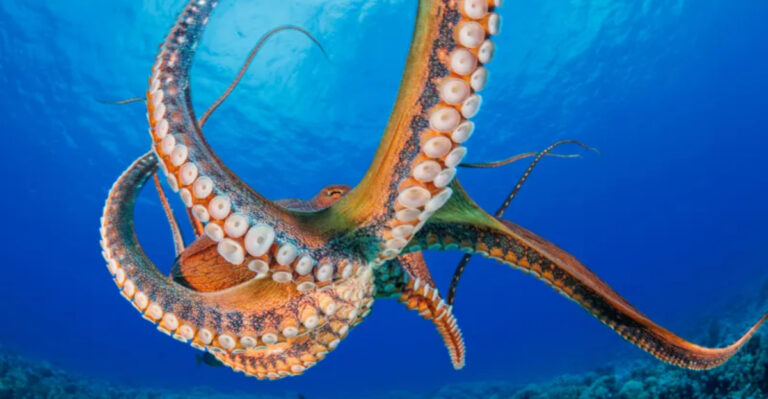These Are 10 Most Massive Fish Swimming In The Ocean Today
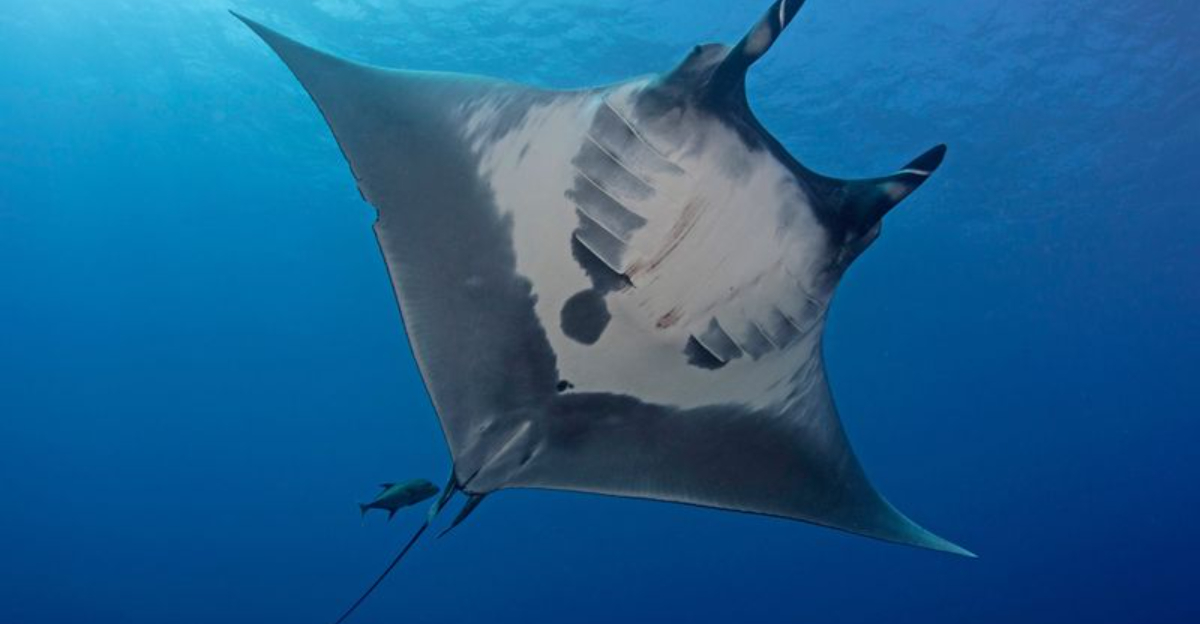
The ocean is home to some of the most gigantic and fascinating fish species that captivate the imagination of marine enthusiasts and casual admirers alike.
These massive creatures not only play crucial roles in their ecosystems but also present a spectacle of nature’s grandeur.
Let’s delve into some of the most imposing fish currently swimming in our oceans, each with its unique characteristics and charm.
1. Hoodwinker Sunfish
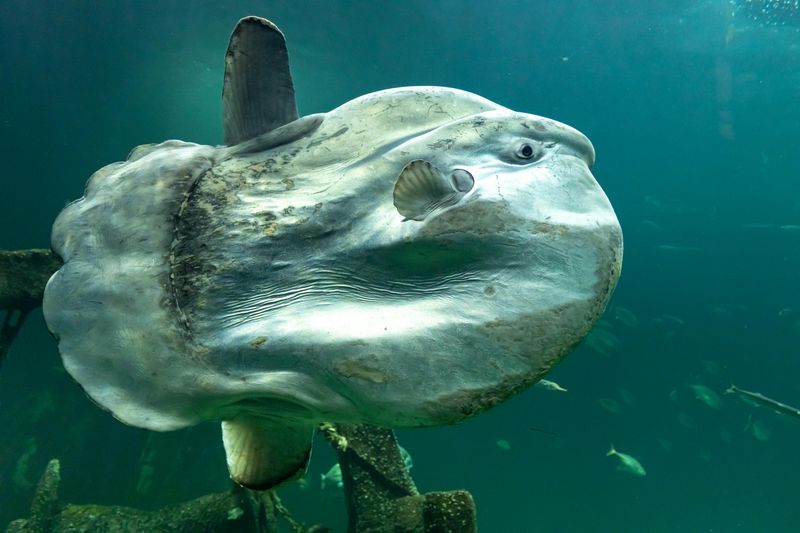
The Hoodwinker Sunfish is a marvel of the deep, often described as a gentle giant of the ocean. With its oval shape and silver-gray skin, this fish can easily blend into its watery surroundings.
Despite its size, reaching up to 8 feet in length, it was only officially recognized in 2017. This elusive nature is part of what makes the Hoodwinker so fascinating.
Swimmers might find it hard to spot due to its ability to remain hidden in plain sight. Its unique name comes from this very characteristic—’hoodwinking’ those trying to observe it. While it may not be as famous as its relatives, it is equally impressive.
The Hoodwinker feeds primarily on jellyfish and small fish, thriving in the temperate waters of the southern hemisphere. Its diet helps control jellyfish populations, showcasing its ecological importance.
Observers often note its odd, clumsy movements, a trait that adds to its charm. Despite its size, the Hoodwinker poses no threat to humans, embodying the gentle side of oceanic giants.
2. Sharptail Mola
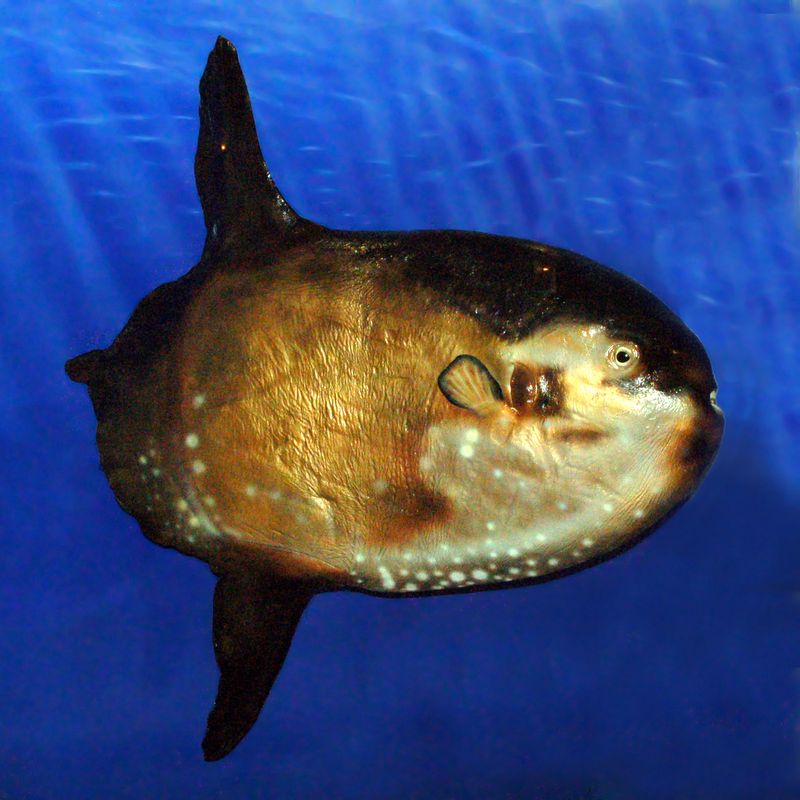
The Sharptail Mola, a relative of the more famous Ocean Sunfish, boasts an intriguing silhouette characterized by a pointed tail fin. Unlike its larger cousins, this species is slightly more elusive, often found in the warmer waters of the Atlantic. Its distinct tail gives it a streamlined look, setting it apart from other Molas.
This fish can grow to an impressive size, reaching up to 6 feet in length. Despite its bulk, it is a master of the open ocean, often spotted basking near the surface to regulate its body temperature. This behavior allows it to gather warmth after diving into deeper, cooler waters.
The Sharptail Mola’s diet consists mainly of jellyfish, crustaceans, and small fish. These dietary preferences assist in maintaining the balance of ocean ecosystems.
Its graceful movements belie its size, as it glides effortlessly through the water. Though not as commonly discussed as other ocean giants, the Sharptail Mola remains a fascinating subject of study, offering insights into the adaptability and diversity of marine life.
3. Beluga Sturgeon
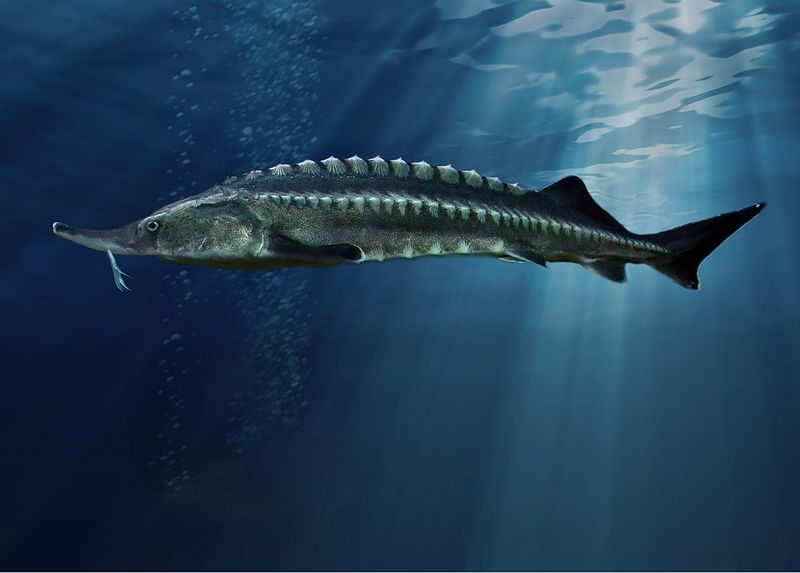
The Beluga Sturgeon is not only massive but also one of the most ancient fish species still in existence, often viewed as a living fossil. Found primarily in the Caspian Sea and its tributaries, this fish can grow to an astonishing 24 feet in length and weigh over a ton. Its elongated body and characteristic snout make it a striking sight as it glides through the water.
This species is most famous for producing beluga caviar, a delicacy that has made it one of the most sought-after fish in the world. Unfortunately, this has also led to its status as a critically endangered species due to overfishing and habitat loss.
In the wild, the Beluga Sturgeon can often be seen during its long migrations upriver to spawn. Its life cycle is a testament to its resilience, as it can live for over a century, surviving challenges that would fell lesser fish. Today, conservation efforts are crucial to preserving this majestic creature, which plays a vital role in the biodiversity of its habitat.
4. Southern Sunfish
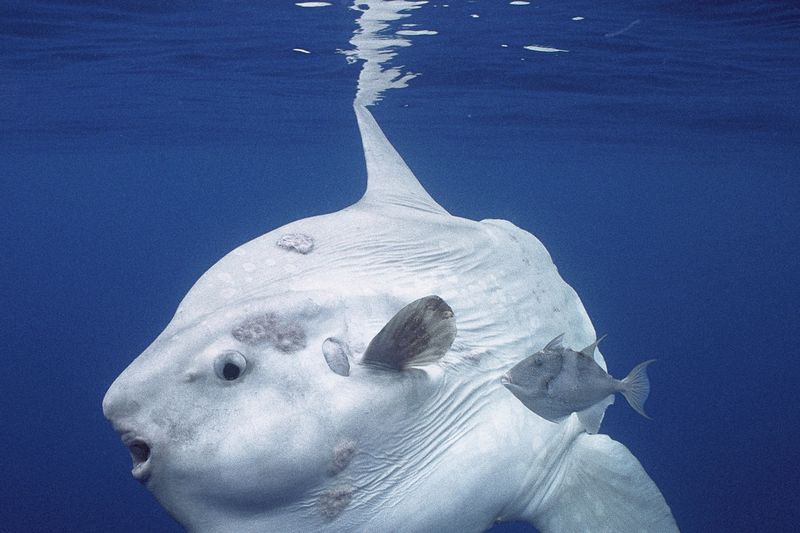
The Southern Sunfish, or Mola Alexandrini, is an impressive spectacle in the world of marine life, known for its immense size and unique shape.
It resembles a massive swimming head, lacking a true tail, which contributes to its distinct silhouette. These giants can weigh up to 2,000 kilograms, making them one of the heaviest bony fish in the ocean.
Commonly found in the southern hemisphere, they inhabit both temperate and tropical waters. This adaptability allows them to thrive in various oceanic conditions, displaying a versatility in their lifestyle. The Southern Sunfish’s diet mainly includes jellyfish, small fish, and plankton, aiding in controlling these populations.
Their sheer size does not hinder their agility, as they often bask in the sun near the ocean surface, a behavior linked to thermoregulation.
This sunbathing allows them to recharge after feeding dives into colder depths. Despite their formidable appearance, they pose no harm to humans, embodying the ocean’s gentle giants. Observing a Southern Sunfish in its natural habitat offers a glimpse into the wonders of marine biodiversity.
5. Ocean Sunfish
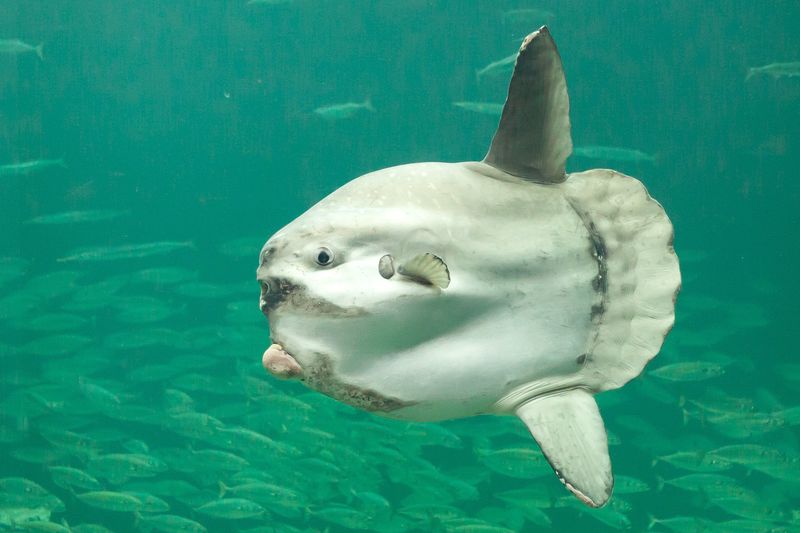
The Ocean Sunfish, or Mola mola, holds the title for the heaviest bony fish in the world, often weighing over 2,200 pounds.
With its disc-like body and tiny fins, it looks almost prehistoric, captivating those who encounter it. These gentle giants inhabit both temperate and tropical oceans worldwide, showcasing an incredible adaptability.
Despite their size, Ocean Sunfish are graceful swimmers, often spotted near the ocean surface basking in the sun. This sunbathing helps regulate their body temperature after deep dives into cooler waters to hunt. Their diet mainly consists of jellyfish, supplemented by small fish and plankton.
The Ocean Sunfish’s unique appearance and behavior make it a favorite among divers and marine biologists. They play a vital role in the ecosystem by managing jellyfish populations, and their presence indicates a healthy marine environment.
Their docile nature and curious demeanor lead to fascinating interactions with humans, sparking awe and inspiration in all who witness their majestic presence.
6. Giant Oceanic Manta Ray
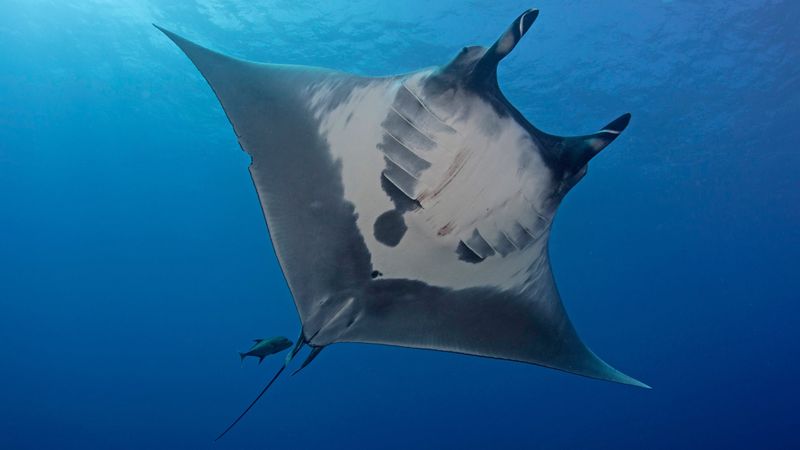
The Giant Oceanic Manta Ray is the epitome of grace in the oceanic world, boasting a wingspan that can reach up to 29 feet.
These gentle giants glide through tropical and subtropical waters, often mesmerizing those lucky enough to see them. Despite their size, they are harmless to humans and feed primarily on plankton and small fish.
Their large brains indicate high intelligence, and they exhibit social behaviors rarely seen in other fish. Manta rays are known to create fleeting bonds with divers, showcasing curiosity and playfulness. These interactions have made them a favorite among marine enthusiasts.
Conservation efforts are critical for mantas, as they face threats from fishing and habitat destruction. Protecting these majestic creatures helps preserve marine biodiversity.
The sight of a Giant Oceanic Manta Ray in its natural habitat is a reminder of the ocean’s vastness and the delicate balance within. Observing their elegant movements is a testament to the wonders of the underwater world.
7. Tiger Shark
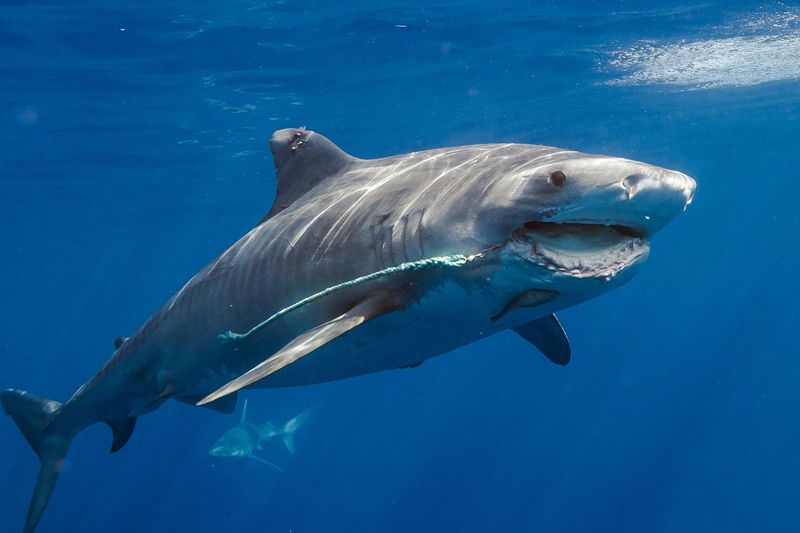
The Tiger Shark, named for its distinct vertical stripes, is a formidable predator patrolling the world’s tropical and subtropical waters. Growing up to 16 feet long, it is renowned for its powerful build and keen sense of smell. These features make it one of the ocean’s top predators, capable of going after a variety of prey, from fish to marine mammals.
Tiger Sharks are often found near coastlines, where they play a crucial role in maintaining the balance of marine ecosystems. Their varied diet helps control populations of different marine species, preventing any one group from overpopulating. This ecological role makes them a key species in their habitats.
Though their reputation might invoke fear, tiger sharks are vital to the ocean’s health. They are fascinating subjects of study, offering insights into the behaviors and adaptations of large predators. Observers often admire their strength and agility, qualities that underscore their status as oceanic icons.
8. Great White Shark
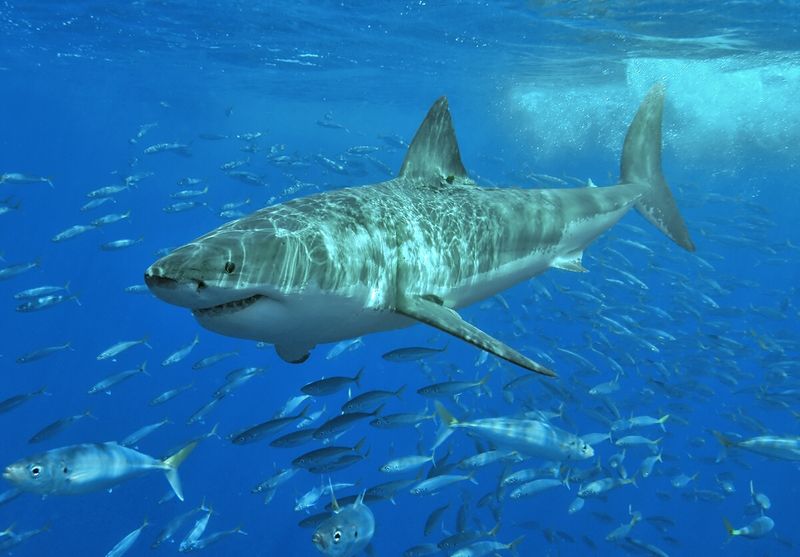
The Great White Shark is perhaps the most iconic predator of the deep, renowned for its size, strength, and hunting prowess.
These formidable fish can grow up to 20 feet long and weigh over 5,000 pounds, roaming the oceans with unmatched authority. Their presence inspires both fear and fascination, making them a symbol of the ocean’s wild power.
Great Whites are often found in coastal areas but migrate vast distances across oceans. This nomadic lifestyle allows them to exploit different marine environments, exhibiting remarkable adaptability. Their diet mainly consists of seals, sea lions, and other marine mammals, but they have been known to eat fish and seabirds as well.
Despite their fearsome reputation, Great White Sharks are not mindless killers. They are curious creatures, and many attacks on humans are believed to be cases of mistaken identity.
Conservation efforts are essential to protect these sharks, as they are a critical part of marine ecosystems. Their role as apex predators helps keep the ocean’s balance, ensuring biodiversity and health.
9. Basking Shark
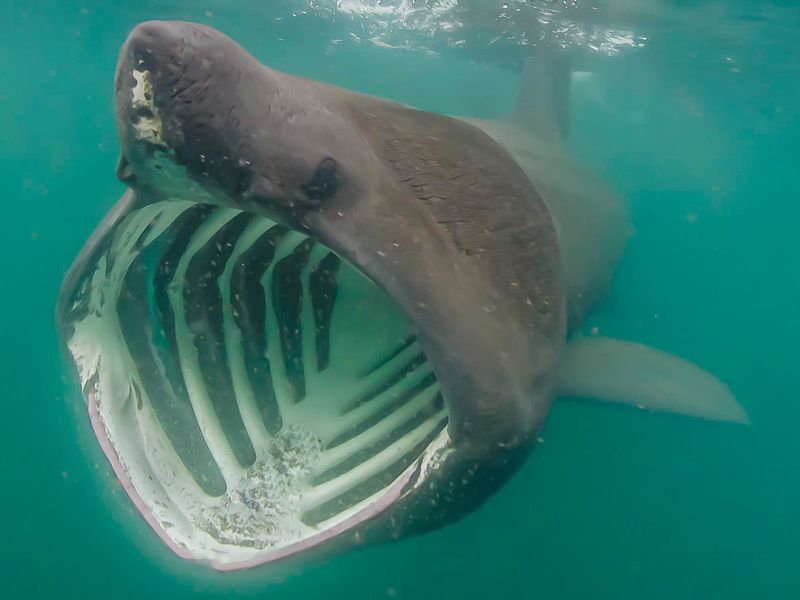
The Basking Shark, the second-largest fish in the world, is an awe-inspiring sight with its massive size and distinctive feeding habits. These gentle giants can grow up to 40 feet long, often seen cruising near the surface with their mouths wide open, filtering plankton-rich water through their gill rakers.
Despite their formidable size, Basking Sharks are harmless to humans, feeding exclusively on tiny plankton. Their presence indicates a healthy marine environment, as they require rich feeding grounds to sustain their size.
These sharks are often spotted in temperate waters around the globe, including the coasts of the UK, Ireland, and the northeastern United States.
Basking Sharks play an essential role in their ecosystems by helping to maintain the balance of plankton populations. Their migratory patterns and gentle nature have made them a subject of fascination and study, contributing to our understanding of marine life.
Observing a Basking Shark in its natural habitat is a breathtaking experience, showcasing the ocean’s vast and mysterious nature.
10. Whale Shark
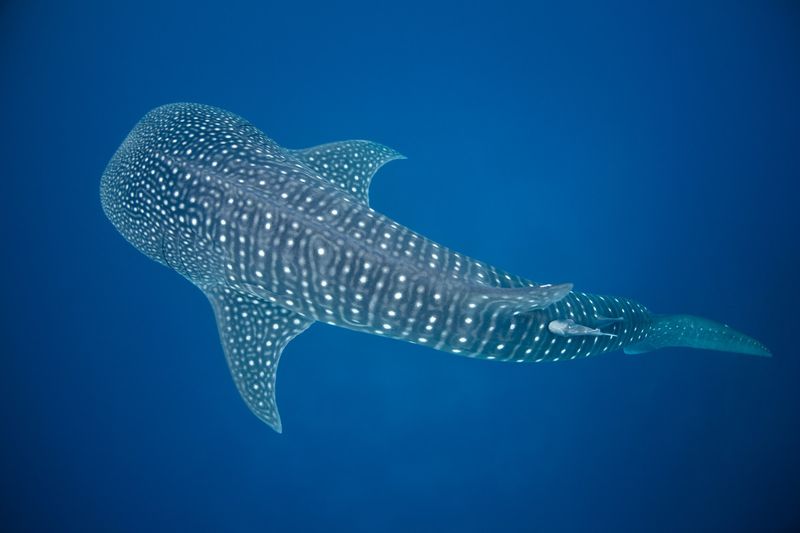
The Whale Shark, the largest fish in the world, is a magnificent creature that embodies the ocean’s grandeur. These gentle behemoths can reach lengths of up to 60 feet, with a mouth that can stretch over four feet wide. Despite their size, they are docile filter-feeders, consuming plankton and small fish.
Whale Sharks are often found in the warm waters of the tropics, where they gather in large numbers during feeding season.
Their distinctive white spots and stripes create a mesmerizing pattern that stands out against the deep blue sea. This unique appearance, along with their gentle nature, has made them a favorite among divers and tourists.
These sharks play a vital role in the marine ecosystem by helping control plankton populations. Conservation efforts are crucial to their survival, as they face threats from fishing and habitat loss. The sight of a Whale Shark swimming gracefully through the ocean is a powerful reminder of the beauty and complexity of marine life, inspiring awe and a deeper appreciation for our oceans.

